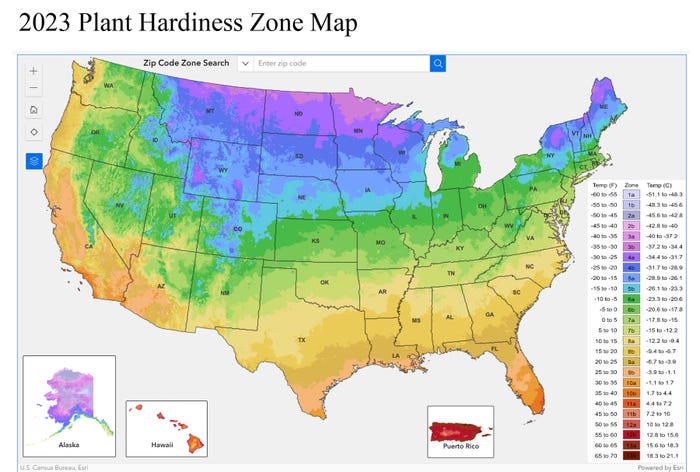
Stay calm. USDA just updated their Plant Hardiness Zone Map.
Several websites I visited asked their viewers not to panic, including the University of Arkansas’ ag news site.
I understand the warning for small scale growers, master gardners and landscapers, but I don’t think I’ve ever heard a full-time, large-scale grower say, “Before we get the planter going we need to check the USDA Plant Hardiness Zone Map.”
Don’t get me wrong, the hardiness map is a good reference if you’re planting non-native trees – a major no, no for most environmentalists – or making sure your cold-weather garden vegetables come up in the winter.
I come from a community where farmers and crop consultants know when to plant large tracts of cotton, soybeans and corn. We miss that mark occasionally when a cold front comes rolling through in late March or April.
I’ve been in a farm community café in late February when one farmer came in, got his cup of black coffee and announced, “Looks like C. is going to try and get his cotton planted in the next two weeks.”
Everyone within earshot grumbled, and gave their opinion about soil temperature and planting too early. That crop went on to be written off for insurance, but a couple of years later, another farmer in the same area planted his cotton in late February and ended up picking his ample crop in late August. I don’t know that he ever did that again, but it worked for him that year.

Source: USDA
I am sure neither of those growers checked the Plant Hardiness Map, maybe the Farmers’ Almanac, but not the PHZM. Most growers and consultants know – or should know - the weather trends in their area. And, as many will say that the climate has shifted in their area, they do know the direction of those shifts and adjust their planting and harvest accordingly.
I often say there is never a normal when it comes to climate. When I first started farming I’d tell my dad, “This isn’t normal.” After a few seasons, I stopped noting the differences year to year except to note that it was an especially hot, or dry, or wet, or cold season – there was never a normal.
The new plant hardiness zones reflect a temperature rise in about half of the U.S. Some areas should be able to plant things they’ve not been able to plant before - flowers, fruits and vegetables. Most of the zones shifts have taken place in Zones 7 and higher – which means the lower half of the country.
This is the first update for the zone map in about a decade. And, USDA notes that, “Temperature updates to plant hardiness zones are not necessarily reflective of global climate change because of the highly variable nature of the extreme minimum temperature of the year.”
Still, don’t panic.
About the Author(s)
You May Also Like






